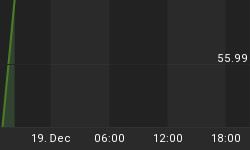Markets are intriguing due to their constantly changing character. New leadership constantly evolves. In equity markets, that tendency is always pushed to an extreme. A maker of electronic toys is today considered the most valuable company. Nonsensical forecasts of a $1,000 share price have even appeared. A company involved in the social networking fad is praised for a billion-dollar acquisition of a company with no revenues, making the internet bubble look like value investing.
Markets may strive for efficiency, but without adult supervision of participants that process can become distorted. For example, theories of the efficiency of markets all assume rational policy making at the central bank. No one ever expected that the monetary policy of the largest economy in the world would be hijacked by academics practicing Keynesian sorcery.
Where the obvious failure of Keynesian academics is fully demonstrated is in the production of real goods. Quantitative easing cannot produce a single barrel of oil or one bushel of grains. Those markets, due to their global nature, are beyond reach of the parochial views and archaic beliefs of Keynesian mysticism. Evidence of the complete inadequacy of this group's efforts can be found in the chart below of the price of soybeans. Federal Reserve can do all the QEs it wants, but that will not produce one single soybean. As apparent in the chart, the price of soybeans seems poised to move to new high territory. Soybeans are likely to become the new corn for Agri-Food producers and investors.

Soybeans are not produced in a factory, and for that reason production is largely unaffected by monetary policy. Soybeans are grown in the ground by farmers. They do that activity one time a year. Weather has reduced grain harvests in South America this year, and QE cannot change that immutable fact, or that no more beans will be harvested in South America till this time next year.

When last we visited, the inadequate global supply of vegetable oils was our concern. Soybeans are one of those grains used to produce edible oils, as well as animal feed. Soybeans grow in a lateral band in the Northern Hemisphere running through Iowa and Illinois and a like band in the Southern Hemisphere. Those regions provide the best climate for soybean sex.
Soybeans are in rather short supply this year. That short supply situation is likely to persist until such time as the price of soybeans rises to a level significantly above current levels. For the next year US$14 per bushel is quite likely to be the new floor for soybeans. Soybeans are likely to replace corn as the grain of excitement in the world of Agri-Foods.
Chart above is of the number of days of global consumption in the bins at the conclusion of the crop year ending as indicated in the graph. This Fall, prior to the harvest of the new crop, the world will have only a little more than 80 days of soybean consumption in storage. That level is far better than 2009, but ranks as one of the lowest supply levels in many years.
Below these macro numbers, the situation is more complex. China's inventory of soybeans is less than 70 days of consumption in storage, well below the global average. China imports almost 80% of that nation's soybean consumption. Chinese soybean imports are almost 30% of total global production. That number does not include that which is imported in the form of soybean oil or meal. Any increase in Chinese consumption of soybeans, as grain, oil, or meal, must be met by importing.
Situation this year is that the South American harvest was less than expected. Further, corn production is more profitable for farmers than soybeans at current prices. Farmers in the Northern Hemisphere are now starting the planting season. For the first time in three years the weather is supportive of that effort in North America. In the U.S., 7% of corn acreage has been planted versus an average of 2% at this time of the year. Illinois, an important corn state, is at 17% versus an average of 1%.
Farmers are going to fully plant corn. In North America, soybeans are planted after corn. Soybeans will be planted in that acreage that is left after the corn is in. In short, soybeans are going to be short acreage in North America this year. The Fall soybean harvest will not be as large as the world needs as a lot of corn is going to be planted.
In the Fall, after the harvest, corn should be far more abundant than at the present time while soybeans will continue in relatively tight supply. Note that China is long corn in reserves while short soybeans, and may import less corn than some forecast. That should mean that corn prices will move toward $5 in the U.S. and soybeans will move up from $14. Soybeans may indeed be the new corn. This situation can only exacerbate the situation in vegetable oils about which we previously talked. Those best situated to benefit from this situation are ADM, BG, and Wilmar International.
9th Agri-Food Commodities: An Investment Alternative, April 2012, is now available. This report, ~140 pages, is the definitive quarterly review of returns produces by Agri-Commodities versus U.S. and Chinese equities, U.S. government bonds, U.S. Treasury bills, and Gold. This edition begins the only major exploration of the Agri-Commodity component of commodity indices. Learn why your portfolio is simply inefficient without exposure to Agri-Commodities.
AGRI-FOOD THOUGHTS is from Ned W. Schmidt,CFA,CEBS, publisher of The Agri-Food Value View, a monthly exploration of the Agri-Food grand cycle being created by China, India, and Agri-Energy. To contract Ned or to learn more, use this link: www.agrifoodvalueview.com
















